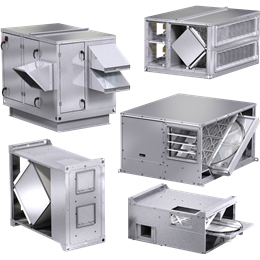Common Myths about ERVs: Unveiling the Truth
Energy Recovery Ventilators (ERVs) have become integral to modern ventilation systems, but misconceptions still linger. Let’s uncover some common myths surrounding ERVs and shed light on the design improvements that make them a reliable choice for indoor air quality.
Myth 1: Cross Leakage Between Exhaust and Supply is a Problem
Truth: Improved manufacturing techniques have virtually eliminated cross-contamination between the exhaust and supply airstreams in modern ERVs. Design enhancements ensure that air transfer between airstreams is as low as 3% or even less. ASHRAE 62.1 – standards that are often years ahead of implemented code – allow for up to 10% of cross leakage from typical contaminated sources like restrooms. Unless you’re ventilating a medical operating room or isolation room, ERV technology is here to stay. Occupants surely won’t even notice, and designers will have to stick up for better than ASHRAE standards to stakeholders who look askance at mention of the term ‘cross contamination’.
Myth 2: Cold Climates Prevent Effective Implementation
Truth: This myth simply lacks the imagination required to think outside the box – and inside! ERVs now come equipped with integrated controls including multiple different frost control strategies that allow operation in all ASHRAE climate zones outside of the arctic circle. It is true that in some climates the heat recovered from indoors with or without preheaters for defrost will not reach a supply air temperature that occupants find comfortable. Supplemental heat often in the form of downstream electric duct heaters close the gap here and are permitted even under the 2021 Washington State Energy Code (WSEC). This heat is limited to 55F here, but properly distributed at the terminal air device this poses no greater challenge to occupant comfort than standard cooling air. This flexibility ensures that ERVs can adapt to varying environmental conditions and provide consistent ventilation performance.
Myth 3: ERVs Can’t Replace Bathroom Exhaust Fans
Truth: Bathroom exhaust can be integrated into an ERV’s total exhaust flow to replace the need for a separate bathroom fan, offering a holistic and simplified solution that saves space in tight ceilings like in group R-2 residential units. See the International Mechanical Code (IMC) section 403.4 for details on incorporating local exhaust sources including kitchen exhaust into your ERV system.

Over the years ERVs have become a field-vetted and code-required HVAC system element that carry the baggage of the myths arising during the turbulent early days of their introduction. Improvements in manufacturing processes are keeping pace with an industry that must grow at every level in its knowledge and expertise in the implementation of this vital component of modern buildings. Learn more about ERVs here.
